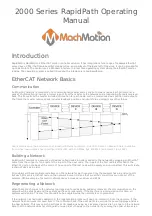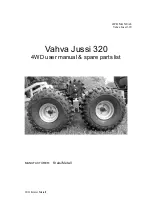
9
Step 5:
When the vessel becomes a maximum of 80% full
(see volume indicator), all valves should be closed.
The product connection is slowly broken in order to
vent any trapped product. After vessel removal, all
connections should be checked for leaks and the
pre-charge and product valve ports capped to pre-
vent leakage.
Step 6:
The vessel should be labeled and placed back into
the padded case and made ready for shipment.
Step 7: In The Lab
Prior to analysis, the product should be mixed. This
is accomplished simply and efficiently by inverting
the vessel end-over-end, causing the mixing ball to
fall through the product. Approximately 10-12 trips of
the mixing ball through the product assures a ho-
mogenous solution.
Step 8:
The regulated pre-charge gas should be recon-
nected to the pre-charge side of the vessel. The pre-
charge gas supply should remain open during analy-
sis.
Step 9:
Purging a small amount of product from the vessel
removes unmixed product from the tee, relief device,
gauge, etc. The unit can now be connected to a
chromatograph and the product analyzed.
Step 10:
After analyzing, the remainder of the product should
be dumped and the vessel properly cleaned. Normal
cleaning can be accomplished by rinsing the product
end with a petroleum solvent and flushing with ac-
etone. If a more thorough cleaning is required, the
vessel should be disassembled.
8. DuraSite Installation & Use:
WARNING: A sample vessel should never be
filled to more than 80%. This allows a 20% pre-
charge cushion to absorb thermal expansion of
the product.
Shipping: Extreme care should be taken when
preparing a vessel for shipment. Both valves should
be capped to prevent possible leakage. The vessel
should be placed in a snug-fitting, well-padded and
durable case. All applicable DOT regulations should
be adhered to.
EASTERN ENERGY SERVICES PTE LTD.
60 Kaki Bukit Place #02-19 Eunos Tech Park Singapore, SG 415979 Singapore
Telephone: +65-6748 6911 Fax: +65-6748 6912
Email: [email protected] Website:
www.eesgroup.com































